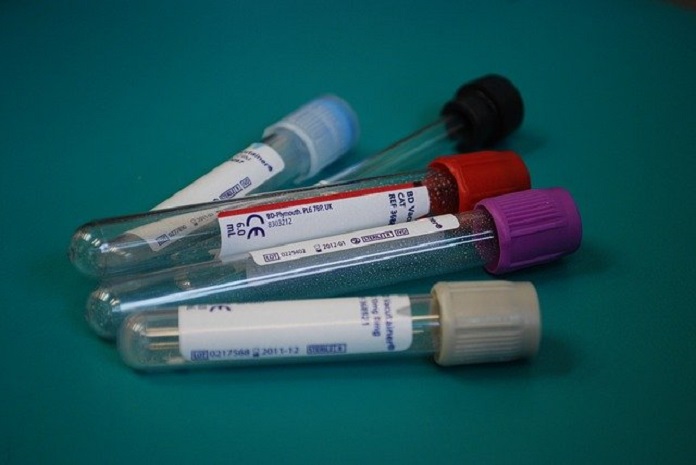Fecal immunochemical tests may improve diagnostic pathways for colorectal cancer.
Bowel symptoms are an imprecise indicator of colorectal cancer (CRC).
Essentially the bowel symptoms produced by colon cancer can also be caused by a range of other conditions.
However, such is the seriousness of bowel cancer that when symptoms are present, patients will usually be referred for a test to rule out cancer.
Ninety-six out of every one hundred patients who receive an urgent referral will not have CRC. As a result, this testing process is inefficient.
The National Institute of Health and Care Excellence (NICE) has recommended the use of fecal immunochemical tests (FIT) as a screening tool since 2017.
However, to date, it is not recommended for use in all symptomatic patients.
Instead, it is currently only used in patients with low-risk symptoms due to concerns surrounding the diagnostic accuracy of FIT.
A new study published in the journal Gut examines the accuracy of FIT as a predictive tool for colorectal cancer. FIT works by detecting blood in the stool, specifically by detecting the globin portion of the haemoglobin molecule found in red blood cells.
This study was conducted across 50 NHS hospitals in England. The study invited patients who had been referred for an investigative colonoscopy to also provide a fecal sample.
A double-blinded approach was employed meaning the colonoscopists were blinded to any FIT lab results and the lab processing of FIT was done without the knowledge of the patient’s colonoscopy status.
The outcome of the study was to compare how well the results of FIT matched the “gold standard” of colonoscopy when it comes to detecting CRC.
In total, 9,822 patients were eligible for inclusion in the analysis having provided eligible FIT results and colonoscopy results.
The key outcome measures for diagnostic accuracy are sensitivity and specificity.
The sensitivity of a test refers to its ability to accurately identify those who do have a specific condition (in this case CRC), whereas specificity is the ability to correctly classify those who don’t have the condition as being negative.
Sensitivity and specificity are both impacted by the threshold that is considered sufficient for a positive result.
This study examined the performance of FIT at three thresholds; 2ug, 10ug, and 150ug of haemoglobin per gram of feces.
The sensitivity of FIT at the 2ug threshold was 97%, meaning that the FIT correctly identified 319 of the 329 individuals in the sample who were found by colonoscopy to have CRC.
Increasing the threshold to 10ug reduced the sensitivity to 90.1% whereas increasing it further to 150ug resulted in the sensitivity dropping all the way to 70.8%.
At this threshold, FIT correctly identified only 233 of the 329 CRC patients because 96 of them had levels of haemoglobin in their fecal sample below 150ug/g.
However, specificity is also a concern for a screening tool.
You want the tool to correctly identify those patients who likely have CRC, but you don’t want it to be incorrectly flagging patients as CRC is positive when they are not.
At the lowest threshold (2ug), FIT returned a negative result for 6,157 of the total 9,493 patients who did not have CRC.
The remaining 3,336 were incorrectly flagged as positive.
This resulted in a specificity of just 64.9%. As the threshold for positivity was increased, the specificity also increased as samples were required to have higher haemoglobin levels in order to be classified as positive.
At 10ug, specificity was 83.5%, and at 150ug specificity was 94.6%.
The optimum threshold to employ depends on a number of characteristics such as the estimated CRC prevalence in the population and the capacity of the health service to carry out colonoscopies.
For example, employing FIT as a screening test using the 2ug threshold will result in 97% of patients with CRC being referred for colonoscopy.
But it will also mean that approximately one-third of people who do not have CRC will be sent for colonoscopies.
Currently, NICE recommends using the 10ug threshold, which according to this study has a sensitivity of 90.1% and a specificity of 83.5%.
However, if the capacity within the health service is sufficient, there are advantages to the lower 2ug threshold.
Not only does it result in more patients who actually have CRC being sent for colonoscopies, but it also has a higher negative predictive value (NPV).
The NPV refers to the confidence that a negative result actually means the absence of the disease. At the 2ug threshold, the NPV for CRC was 99.8%, meaning that if you receive a negative FIT result, there is a 99.8% chance you do not have CRC.
The results of this study strongly support the use of FIT as part of the diagnostic pathway for colorectal cancer.
It also suggests that NICE may wish to reconsider their current recommendation in terms of the optimum threshold to use as well as expanding the patient population who are referred for FIT.
Written by Michael McCarthy
Image by kropekk_pl from Pixabay



